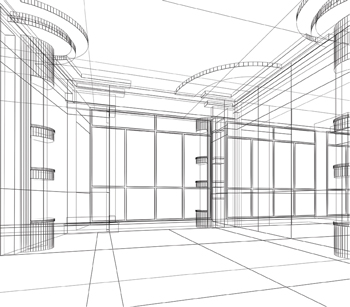Building Environmental Systems on a Corporate Intranet Backbone
Traditionally, environmental building systems, such as lighting and HVAC, have been segregated to independent, proprietary networks with little or no interaction between the systems. Installation and control of these systems have fallen purely under the direction of corporate facility managers, but two factors are creating opportunities for AV managers to capitalize on their IT knowledge, and take more ownership of environmental systems—the move toward centralized intelligence on a common platform for environmental systems, and the drive for greater sustainability.
Advances in technology, specifically radio frequency (RF) communications, enable systems to more easily share data across a room, over a floor, within a building, or even throughout a campus. Integration can be as simple as programming an occupancy sensor on a lighting system to communicate with the HVAC system, facilitating energy savings when a room is unoccupied. The same sensor can also interface with space utilization software to allow owners the ability to better manage their real estate needs. To realize even greater efficiencies, a building can incorporate automated shading systems that will exchange data with HVAC systems and daylight sensors to manage glare and solar heat gain, optimizing energy performance while enhancing the work environment.
Data generated from building systems with multiple, disparate networks such as fire alarms, HVAC, lighting, security, card access, and AV can be normalized and centrally managed to enable better analytics and contribute to a more sustainable, scalable building systems infrastructure.
An effective total light management system allows simple interface through native BACnet communication. Myriad solutions are available that employ native BACnet architecture and are enabled to sit on a corporate IT network, or to operate as a standalone lighting control solution as required by the installation. A native BACnet system provides the end-user with the power to determine what information is justified to travel along the IT network, and to manage that information without the complexity and cost of translating points of information by the manufacturer or a third party. It also enables easy expansion and modification as building requirements change.
Aggressive Energy Mandates Drive Code Compliance
The rapid adoption of intelligent building systems is the result of aggressive efforts by the General Services Administration (GSA) and the U.S. Green Building Council (USGBC) to mandate energy code compliance and beef up requirements for LEED certification, as well as by Fortune 100 companies that are committed to taking leadership roles in the area of building efficiency. In addition many U.S. cities, including New York City, Seattle, San Francisco, Washington DC, and Austin are requiring public disclosure of energy use for building over 50,000 square feet.
Because lighting typically accounts for approximately 38 percent of the electricity use in commercial buildings, it also represents one of the greatest opportunities for saving energy in the commercial environment. By utilizing light control strategies such as occupancy/vacancy sensing, daylight harvesting, controllable window shading and scheduling, building managers can save up to 60 percent of lighting electricity use and they can easily demonstrate these savings via reductions in utility costs.
ROI
These efficiencies can be achieved at a relatively low cost with ROI of as little as two years. Certain manufacturers offer wireless solutions that communicate via radio frequency, can be installed quickly and easily with minimal or no disruption to building tenants, and are scalable at any time from a single space to an entire floor, or even an entire building. As buildings expand or building layouts change, the light control systems can accommodate these changes by means of simple digital programming—no need for expensive new wiring or capital financing.
Saving Energy & Enhancing Building Value
Simple solutions such as wireless occupancy/vacancy and daylight sensors and digitally addressable fluorescent dimming ballasts enable lighting system upgrades that encompass both an energy management solution as well as a data point that can be used to monitor and manage lighting use throughout a facility.
Robust, energy management data can be as granular or as broad-based as desired based on digital protocols, and allow monitoring and control by individual fixture, large area, or any combination of areas in a building. Lighting energy data can be analyzed as a separate entity, or delivered via BACnet integration to a systems integrator and incorporated into the building management system architecture.
Building owners are becoming more aware of how building environmental systems affect their ability to write longer-term leases, generate higher revenue as a result of a more desirable building, and reduce building operating costs. They are acutely tied into the ways in which innovative lighting control systems can directly affect other building goals such as energy conservation and sustainability, operational efficiency, occupant satisfaction and financial optimization, and increasingly rely on tech-savvy managers who can deliver integrated building management solutions with measurable results.
As sustainability in organizations becomes inextricably associated with corporate performance, organizations are continuing to seek out the additional value that can be derived from the IT network and all other building systems. Building owners are demanding greater oversight; by centralizing the thousands of points of data a building is generating, and making that data easier to understand and analyze, owners can proactively manage energy use and the occupant experience—factors that can be directly attributed to a better bottom line.
Brian Dauskurdas, director of Total Building Solutions, has been with Lutron Electronics for the past 12 years. He has been intimately involved in the specification, construction, and commissioning of some of the largest buildings in the world.
info
US General Services Administration (GSA)
gsa.gov
Lutron Electronics
Lutron.com
U.S. Green Building Council (USGBC)
usgbc.org










